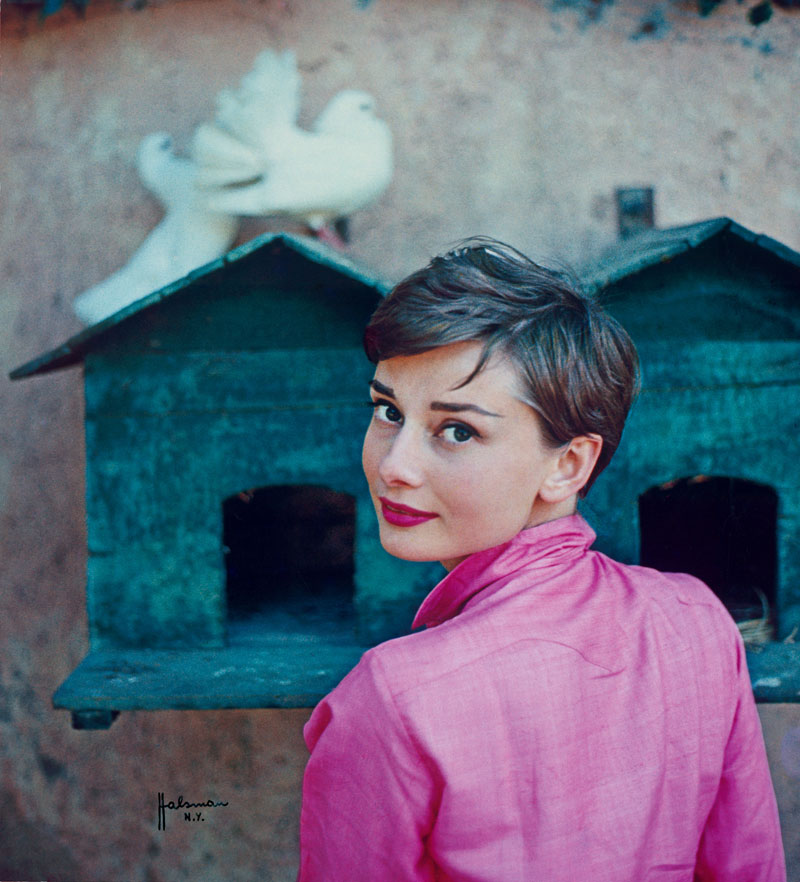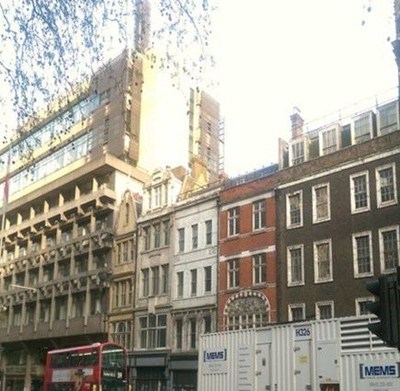In 1957 Audrey Hepburn played a shy bookshop employee and aspiring philosopher transformed into a model in Funny Face – a film based on the photographer Richard Avedon. Hepburn was a dancer when she was first discovered, but the unexpectedness of her career draws many parallels with her onscreen character. Hepburn went on to collaborate with Avedon on the fashion spread ‘Paris Pursuit’, which, in its visual allusions to cinema epitomises how photography, film and fashion came together to create the many faces of Audrey Hepburn.
Mark Shaw, who photographed her on the set of Sabrina in 1953, called Hepburn ‘the most intriguingly childish adult, feminine tomboy I’ve ever photographed…She’s many women wrapped up in one.’ This variety is overwhelmingly apparent when confronted with the exhibition’s extensive collection of formal portraits, fashion shoots and candid images combined with previously unseen photographs from the family archive.
This multiple Hepburn is sometimes literal: reflected by mirrors in a dressing room scene by Shaw and a fashion shot by Erwin Blumenfeld; created by photomontage in a Surrealist vision by Angus McBean and by Lux soap posters featuring Hepburn’s face in a reportage photo of Rome by George Daniell. The repetition of a Hollywood starlet is now a well-established allegory of the studio system and young actresses’ struggles for individuality. Hepburn’s success in continuously transforming herself is as apparent in the exhibition’s striking wall of magazine covers from the 1940s to ’90s, as it is in her onscreen transformations from Princess Ann to Anya Smith in Roman Holiday, and from a cockney flower-seller to high-society lady in My Fair Lady.
Audrey Hepburn photographed wearing Givenchy (1955), Norman Parkinson © Norman Parkinson Ltd/Courtesy Norman Parkinson Archive

Cecil Beaton, who often photographed Hepburn and designed costumes for My Fair Lady, saw her as a new icon of femininity; her mix of gamine and glamour suited a post-war moment of increasing female emancipation and Dior’s New Look. Amongst the predominantly black and white images, two photographs bring this into glorious Technicolor – a confident Hepburn in a hot pink shirt looks over her shoulder at the photographer Philippe Halsman while nearby a demure Hepburn in pale pink Givenchy poses coquettishly for Norman Parkinson. This tightrope continued into the 1960s, when Hepburn’s character Holly Golightly in Breakfast at Tiffany’s was symbolic of moral decline as much as elegance.
The exhibition has a sense of homecoming. Hepburn made her West End debut as a chorus girl in 1949 at Ciro’s Club on Orange Street, London, now the site of the gallery’s archive. This is not the only poetic return in Hepburn’s life. After the Second World War, a young Audrey received food and medical care from UNICEF. Four decades later she dedicated herself to helping that same charity as an International Goodwill Ambassador. Her work in Ethiopia, Sudan, Bangladesh and Somalia was documented in photographs by her partner Robert Wolders, amongst others.
There are fewer formal images of Hepburn in later life, as she focused on her family and charity work. Nonetheless, in 1991 she was photographed by Steven Meisel in an exuberant pose reminiscent of the young dancer in Arnhem – a return which highlights golden thread of gaiety through this diverse set of images.
Audrey Hepburn as Holly Golightly in ‘Breakfast at Tiffany’s’, by Howell Conant, published on the cover of Jours de France, 27 January 1962

‘Audrey Hepburn: Portraits of an Icon’ is at the National Portrait Gallery, London until 18 October.
Related Articles
Review: Made in Italy, ‘The Glamour of Italian Fashion’ at the V&A (Rosalind McKever)
Stars in whose eyes? The lack of women artists in Bailey’s Stardust (Elizabeth Grant)





